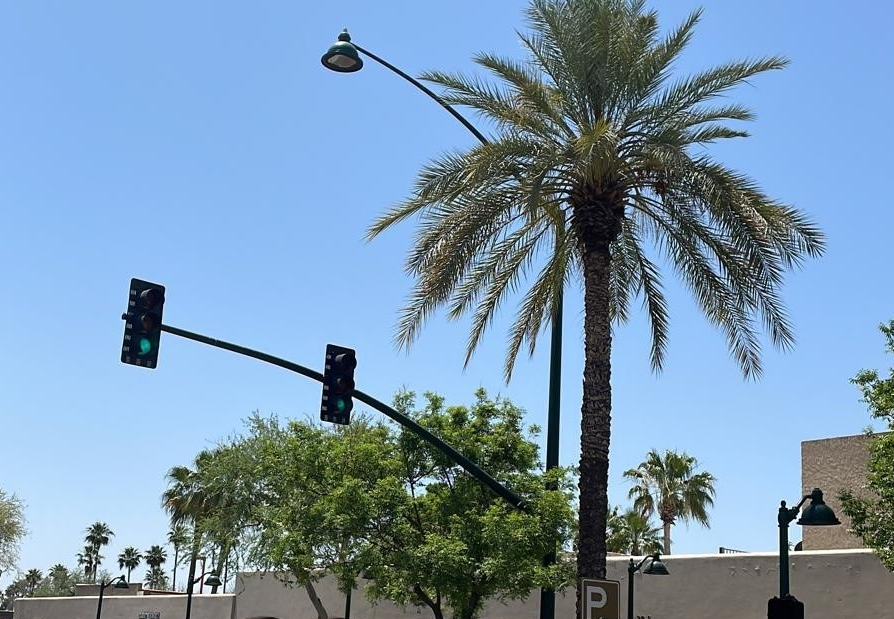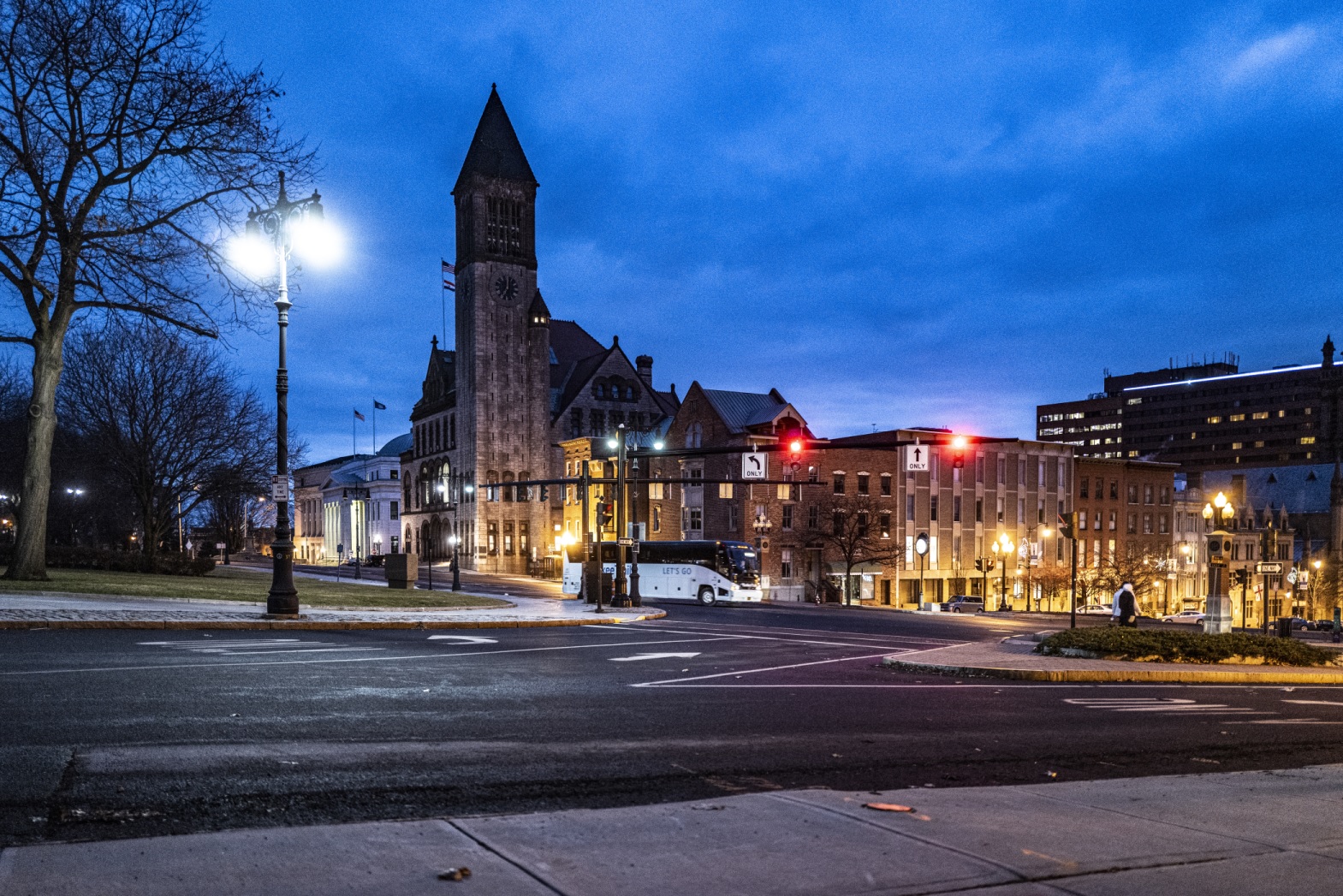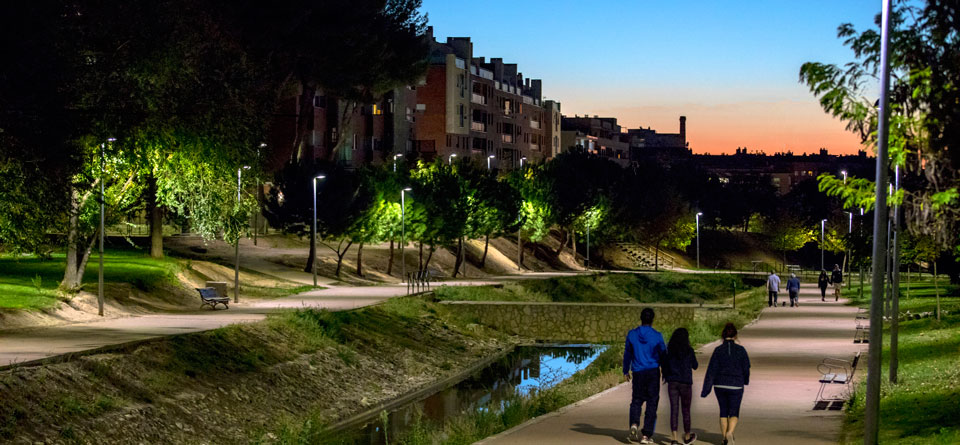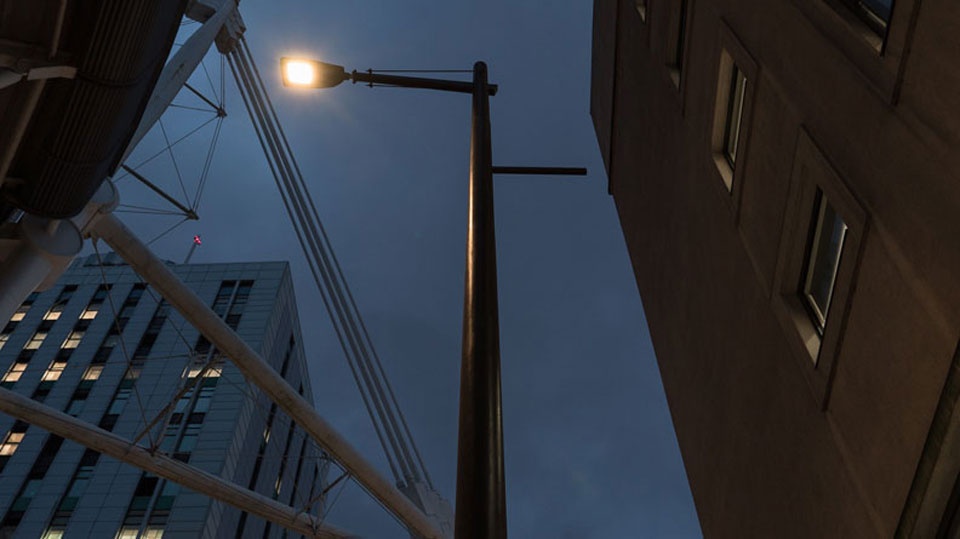
Photo: Signify
Scaling innovation: Getting beyond the smart city pilot
18 May 2023
There are three key foundational technologies for digital innovation in cities, according to Scott McCarley, Director of Marketing, Public Systems and Services at lighting technology company Signify. These are: smart streetlights, sensors, and broadband connectivity.
“Many cities are piloting these areas, but are challenged to deploy them at scale,” he said.
McCarley was speaking at the recent Cities Today Institute City Leadership Forum in Las Vegas. He told the audience of US city digitalisation leaders that the key to overcoming scaling hurdles is tapping the “synergies”.

“Most cities see connecting their streetlights as common sense, as an inevitability, because there are such clear benefits,” said McCarley, noting flexible and adaptive lighting capabilities, reduced truck rolls, energy savings, and more.
Technology advances enable cities to go further. These include streetlight solutions that go beyond light to provide broadband backhaul and to support a variety of sensors that offer cross-city benefits, from air quality improvement and parking management to cameras for public safety and traffic applications.
Sensor-ready luminaires built on industry standards such as D4i and Zhaga-D4i mean cities can add new use cases over time and mix and match the best “plug and play” sensor solutions from different technology suppliers.
Streamlining connectivity
McCarley highlighted some of the latest tools such as radar sensors that detect oncoming vehicles and pedestrians and adjust illumination accordingly, and sensors that monitor weather and road conditions and optimise lighting for safety. A growing number of cities are exploring acoustic sensors to adhere to noise ordinances as well as sensors with artificial intelligence (AI) analytics for use cases such as vehicle classification, counting and public safety.
Different sensors and applications have different communication and data needs. High-speed backhaul is needed to support some of these applications, such as cameras that deliver live video feeds, and to underpin wider innovation. High-speed backhaul is also necessary for small cell and public Wi-Fi deployments made available on the lighting infrastructure to address the digital divide in cities.
“Cities are trying to figure out how to deliver high-speed backhaul to their lighting infrastructure and elsewhere without trenching and digging up streets. It is extremely expensive and, in certain areas, just too disruptive,” said McCarley. “New technologies are available, though.”
The latest solutions such as broadband luminaires and digital kiosks integrate high-speed connectivity directly into street lighting infrastructure to power cameras, small cells, fixed wireless access, Wi-Fi, and more.
“We’re building all of this into one form factor,” said McCarley. “By bringing these technologies into the streetlight, not only do you get around some of these engineering challenges of attachments going to different form factors, you also ensure aesthetics.
“And what’s equally important is that you get on an aligned synergistic infrastructure with some of the other programmes you have in your city.”
Innovation in Mesa
The approach was exemplified in Mesa, Arizona. The city was already undergoing an LED and connected lighting upgrade with Signify and using the new streetlights to power Wi-Fi hotspots as part of a multi-pronged approach to improving digital equity.
However, Mesa wanted to overcome some of the traditional challenges of public Wi-Fi, which after multiple ‘hops’ often becomes too weak to use and may require additional fibre trenching. The city was able to add broadband luminaires to the streetlights with integrated multi-gigabit wireless connectivity technology to create a scalable mesh network. This addresses the challenges Mesa was facing at a fraction of the cost and time compared to an all-fibre network deployment.

Mesa started with a pilot in one parking lot and continues to expand its programme from there.
Harry Meier, Deputy CIO for the City of Mesa, said the solution helped address a piece of the digital equity puzzle, saved truck rolls, and provided good aesthetics, avoiding typical messy configurations with multiple lights, wires and antennas.
On getting projects out of pilot mode and into deployment, Meier agreed with McCarley that “synergy is key.”
“We found a platform that provides multiple purposes for the city. It allows the city’s sustainability efforts, converting to LED streetlights, to work in concert with our digital equity efforts, getting broadband into neighbourhoods, with our public safety efforts, enabling cameras for the real-time crime centre and parking analytics, and with other smart city efforts,” Meier said, noting that cameras and sensors are also supported by the connectivity.







